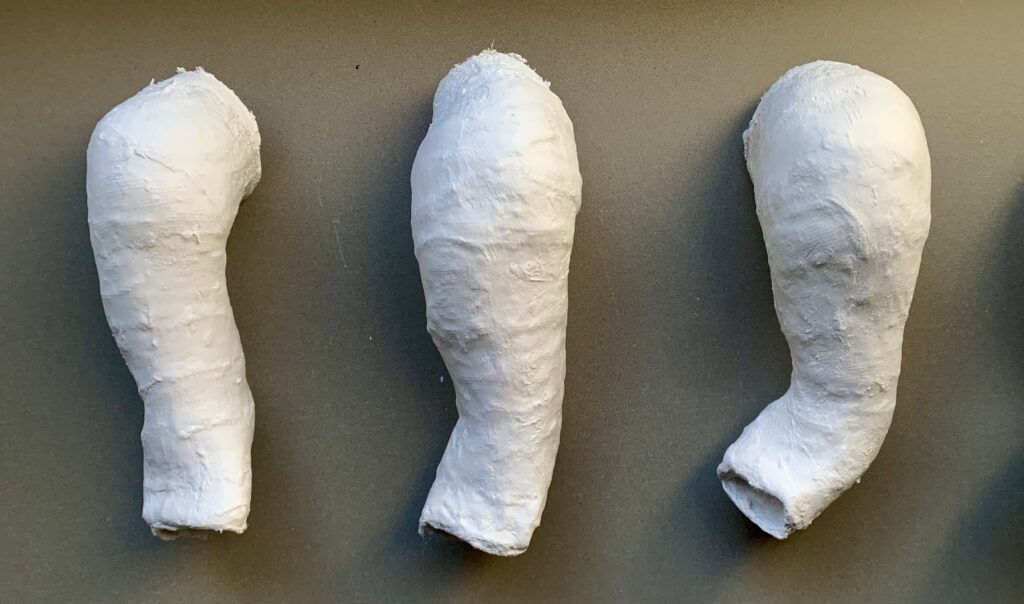Ponseti treatment consists of three phases. The first is specific serial casting to gently manipulate the foot into an over-corrected position. The second is a surgical lengthening of the achilles tendon to complete the correction. The third is the application of boots that maintain the overcorrected position worn full-time for the first three months then over night for a period of four years.
The Ponseti treatment has been shown to produce the best results for what was a disabling condition. There is a recurrence rate of around 30% usually presenting as achilles tightness or supination of the forefoot that might require recasting and/or surgical intervention.
When should Ponseti management begin?
Ponseti management usually begins within the first few weeks of your baby’s life. This takes advantage of the elasticity of the tissue of the baby’s foot. Other factors such the opportunity to establish parental/baby bonding and establishing feeding are also considered.
What will happen at each appointment?
Your baby’s foot will be examined and the Pirani Severity Scale will be used to track the improvement of the foot position. The foot will be gently manipulated for a short period and then this position will be held by a plaster cast. The tissues of the foot relax within the cast over the week. The cast will extend from the baby’s toes to the groin to prevent the cast from slipping off the baby’s foot.
At the following appointment a plaster saw will be used to remove the cast and the process repeated each time gaining more correction.

What do I need to know about looking after my baby with a cast on?
Circulation issues
It is completely normal for the toes to be mildly blue immediately after the cast is applied and this should settle over an hour or so
Check you baby’s circulation in the foot every hour for the first 6 hours after the application of each new cast, and then 4 times a day. Do this by gently pressing on the toes and watch the return of colour (blood flow). The toe will turn white as you gently press on it and then quickly return to pink as you release if the blood flow is good. This is called “blanching”.
If your baby’s toes are consistently very white and your baby is uncomfortable, the cast may be too tight. If this occurs you may need to present to your local emergency department or contact us for advice.
Sometimes your baby’s toes may appear pale or become cold. In this situate warm up the toes by covering with a sock and gently elevate the legs on a towel or pillow.
Cast Slippage
It is important to check the position of your baby’s toes in relation to the end of the cast. Occasionally a cast can slip out of the ideal place, if this happens it will look like your babies toes are disappearing into the cast. You will need to contact us if this happens.
Cast Care
While the casts are in place you will need to sponge bath your baby with a damp cloth. You will not be able to give your baby a bath during the corrective phase of treatment. If the cast becomes soiled it can be wiped clean with a slightly damp cloth or baby wipe.
Support the cast on a pillow or small rolled towel with your baby’s heel extending just over the edge of the support. This will elevate your baby’s legs and prevent pressure on the heel of your baby.
Keep the cast dry and clean by changing your baby’s nappy regularly and ensuring you keep the upper end of the cast outside the nappy. Maintain a wrap of webril (cotton roll) around the top of the cast to minimise soiling.
